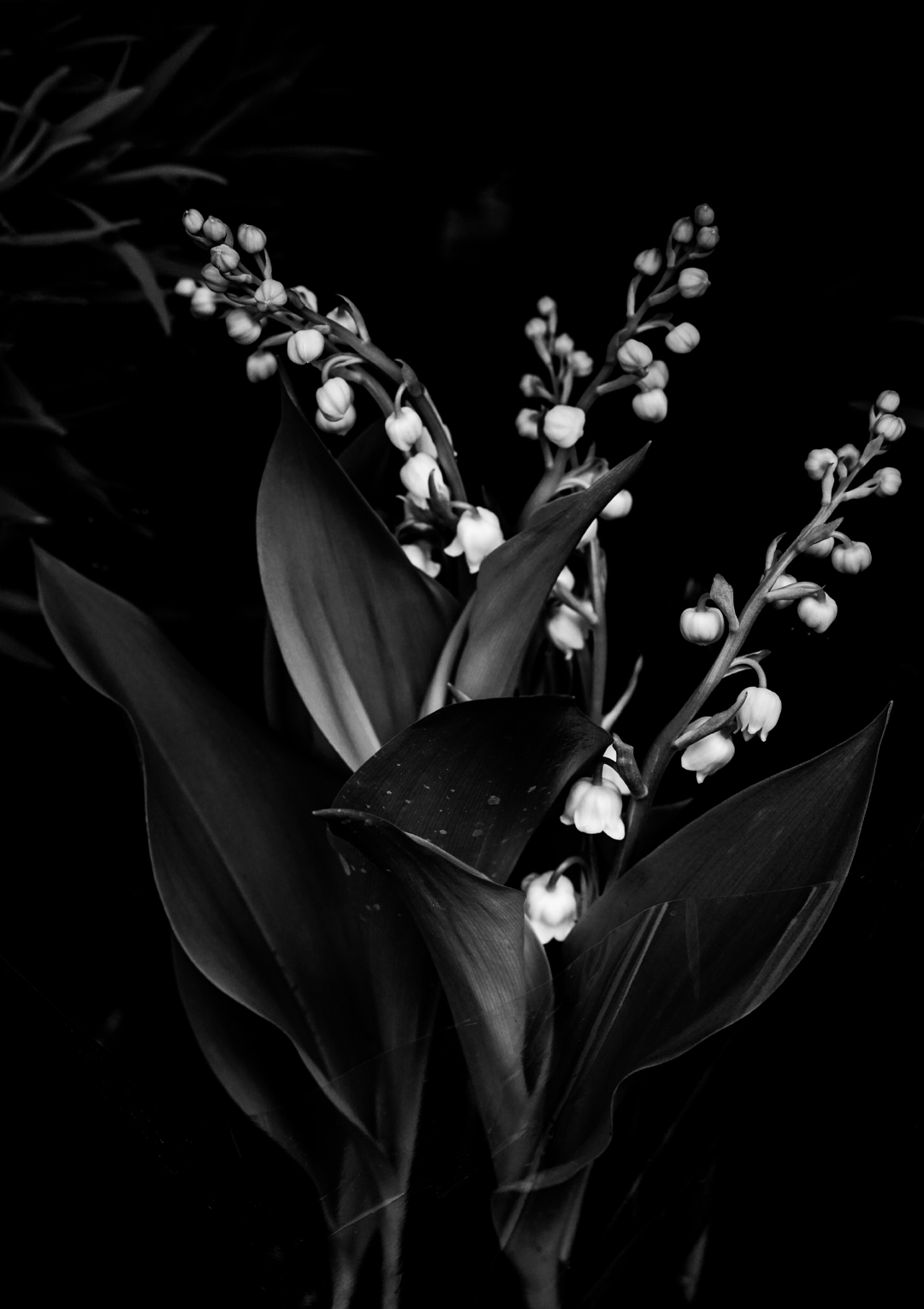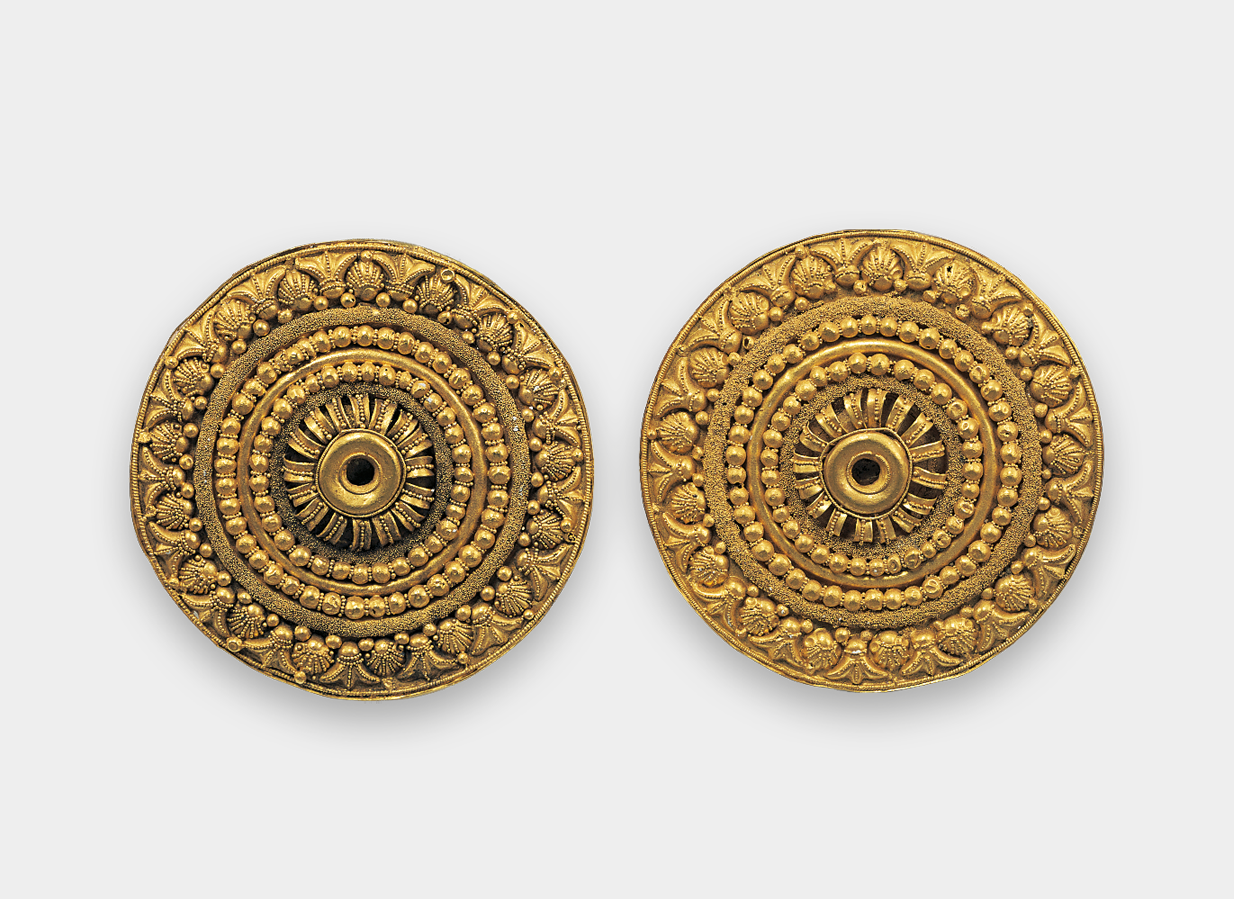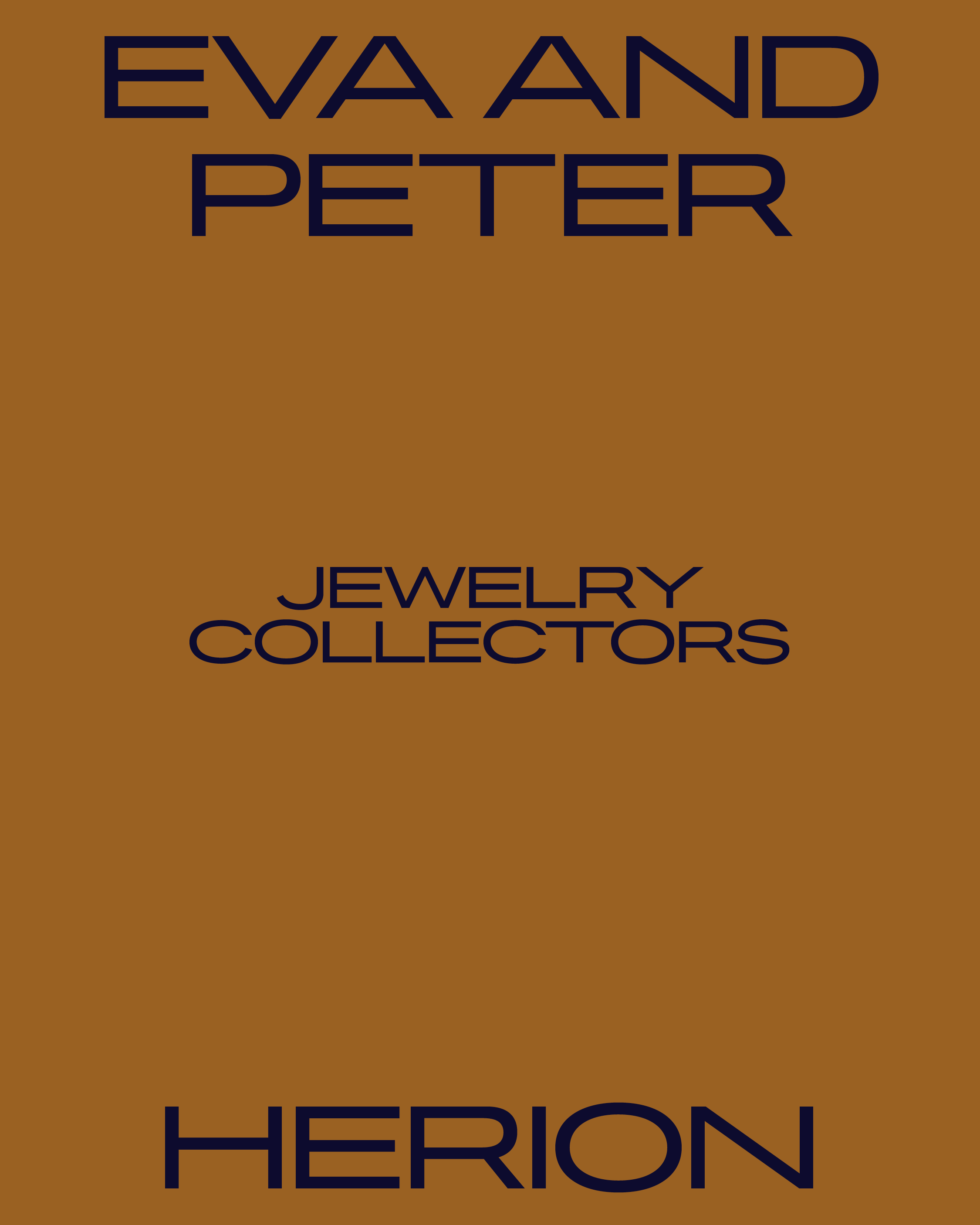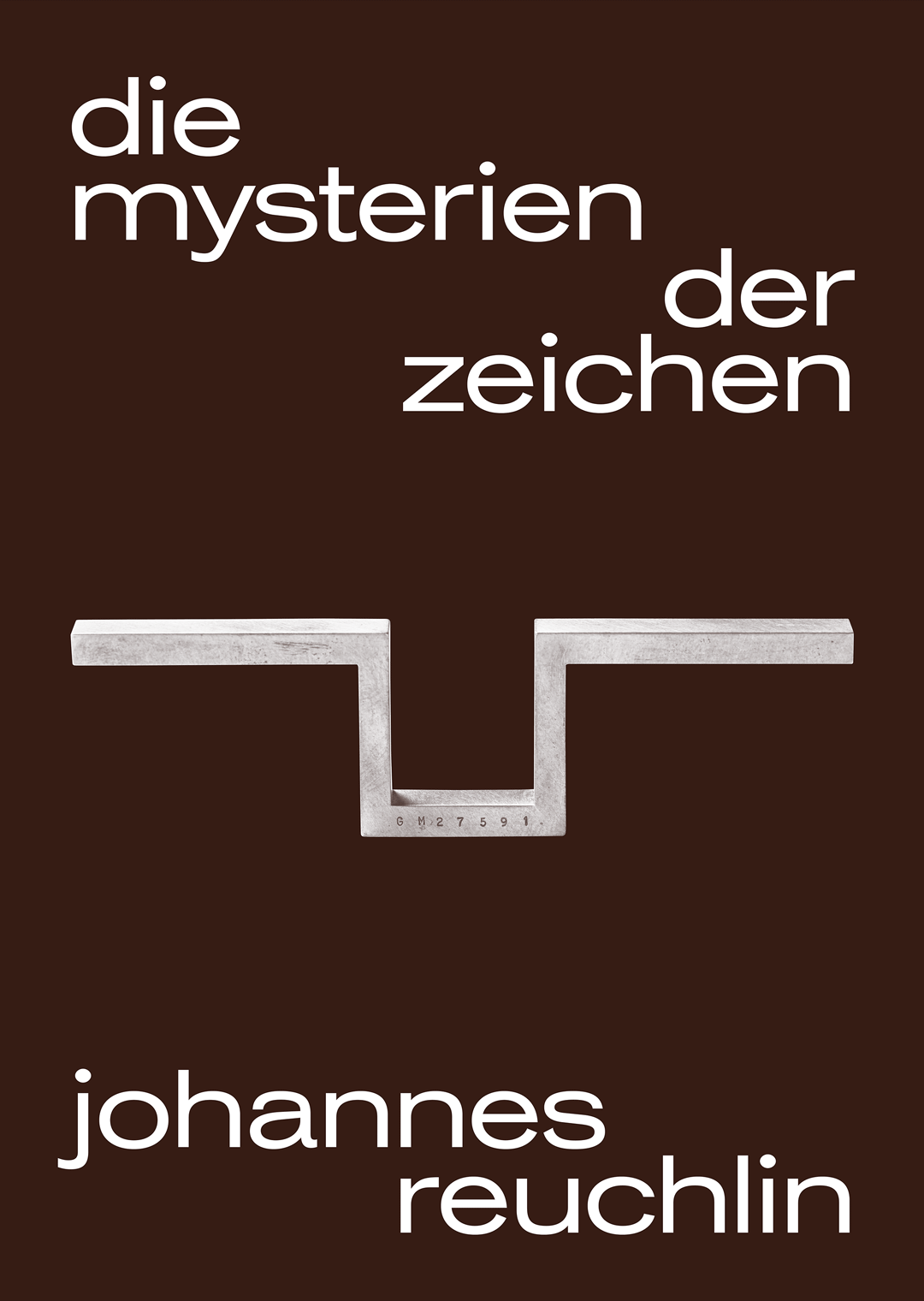Etruscan Goldsmithing
The resplendently beautiful ornamental discs (Decorative Earring Discs) enhanced with tiny spherules using the ancient granulation technique, which Etruscan goldsmiths brought to perfection around 600 BC, were created in Etruria. A pair of delicately filigreed gold bracelets (Gold Bangles), also crafted in Etruria, is another example of the Etruscan goldsmiths’ extraordinary artistic craftsmanship, which is also demonstrated by a small fibula complemented with a sphinx on the catch (Gold Etruscan Fibula).









